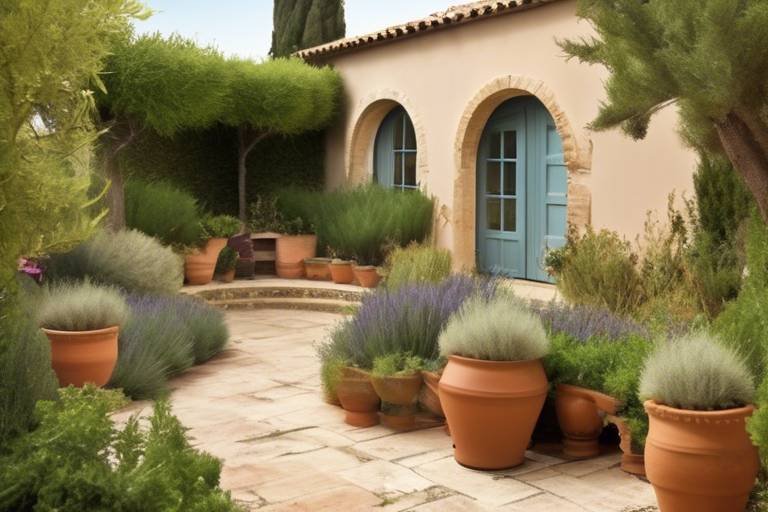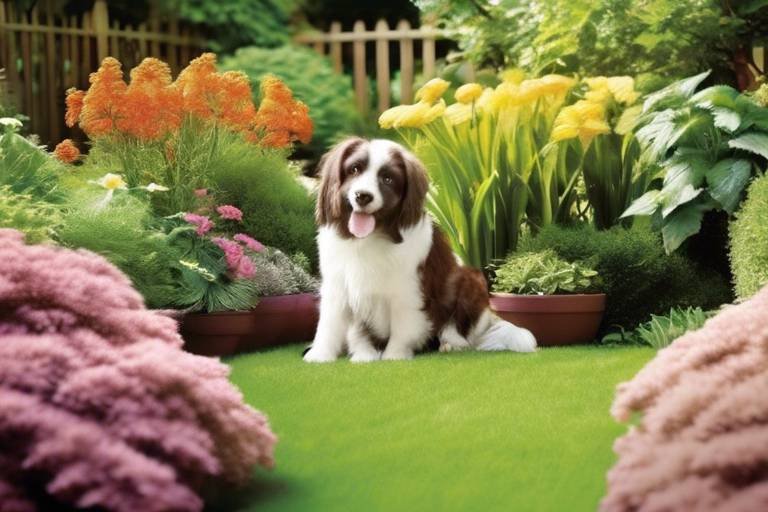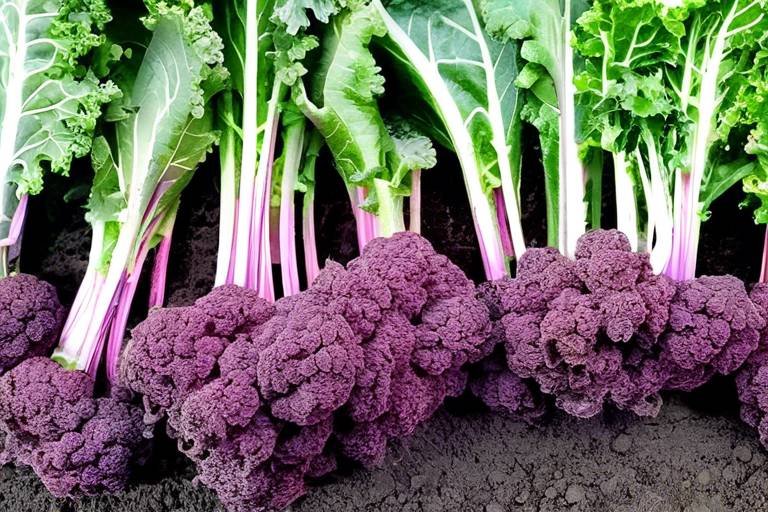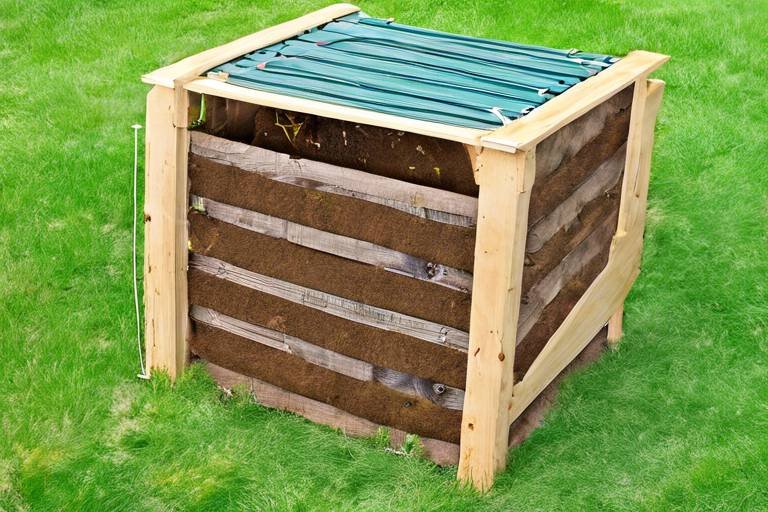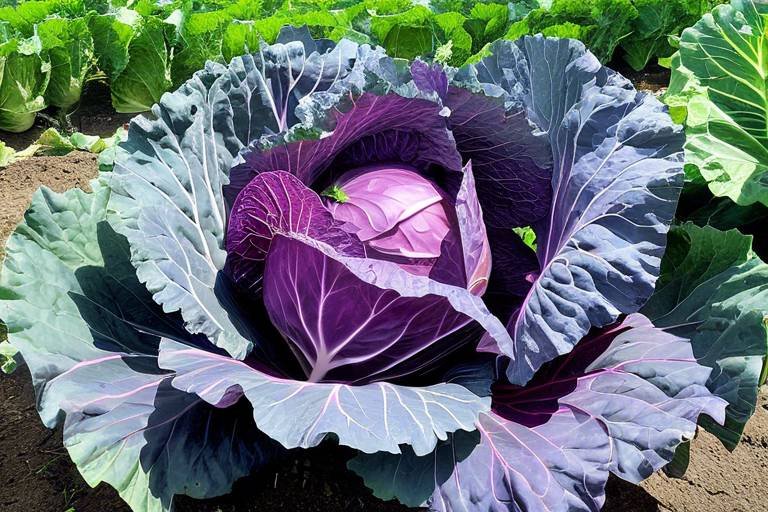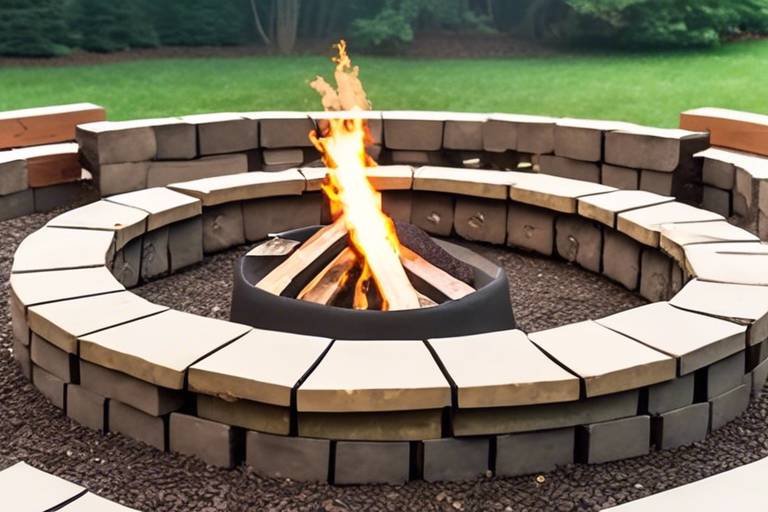Best Plants for Indoor and Outdoor Gardens
When it comes to creating a vibrant and thriving garden, selecting the best plants for both indoor and outdoor spaces is crucial. The right plants can add beauty, color, and texture to your surroundings while also improving air quality and creating a peaceful ambiance. Whether you are a seasoned gardener or just starting out, exploring a variety of plant options can help you create the garden of your dreams.
Indoor plants are not only decorative but also beneficial for your health and well-being. They can purify the air, reduce stress, and create a relaxing atmosphere in your home. Plants like peace lilies, spider plants, and pothos are popular choices for indoor spaces due to their low maintenance and air-purifying properties.
On the other hand, outdoor plants can transform your garden, patio, or balcony into a colorful and fragrant oasis. From vibrant flowers to lush foliage, outdoor plants offer a range of options to suit your preferences and gardening style. Consider planting roses, lavender, or hydrangeas to add beauty and fragrance to your outdoor living areas.
When it comes to succulents and cacti, these unique plants are known for their striking appearance and low maintenance requirements. Perfect for both indoor and outdoor settings, succulents and cacti come in a variety of shapes and sizes, making them versatile additions to any garden or living space.
Herbs and vegetables are not only practical but also rewarding to grow. Whether you have a dedicated garden plot or a small kitchen window sill, growing herbs like basil, mint, and parsley can provide fresh flavors for your cooking while vegetables like tomatoes, peppers, and lettuce offer the satisfaction of harvesting your own produce.
Flowering plants are a popular choice for adding color and vibrancy to both indoor and outdoor spaces. From blooming orchids to cheerful daisies, flowering plants can brighten up any corner of your home or garden, creating a lively and inviting atmosphere for you and your guests.
Foliage plants, prized for their lush green leaves and unique textures, are perfect for creating a green oasis indoors or adding a touch of elegance to outdoor landscapes. Plants like ferns, palms, and philodendrons can bring a sense of tranquility and sophistication to your living spaces, enhancing the overall aesthetic of your garden.
When selecting plants for your indoor and outdoor gardens, it is essential to consider the climate conditions of your area. Some plants thrive in sunny and dry climates, while others prefer shade and moisture. By understanding the specific needs of each plant, you can ensure they will flourish in your garden and bring joy to your surroundings.
To keep your indoor and outdoor plants healthy and thriving, proper care and maintenance are key. From watering schedules to light requirements, fertilization, and pest control strategies, taking care of your plants requires attention to detail and consistency. By following these valuable tips, you can enjoy a flourishing garden all year round.
As you embark on your gardening journey, remember that each plant is unique and requires individualized care. Experiment with different plant varieties, colors, and textures to create a diverse and visually appealing garden that reflects your personal style and creativity. With patience, dedication, and a little bit of green thumb magic, you can cultivate a beautiful and flourishing garden that brings joy and tranquility to your life.
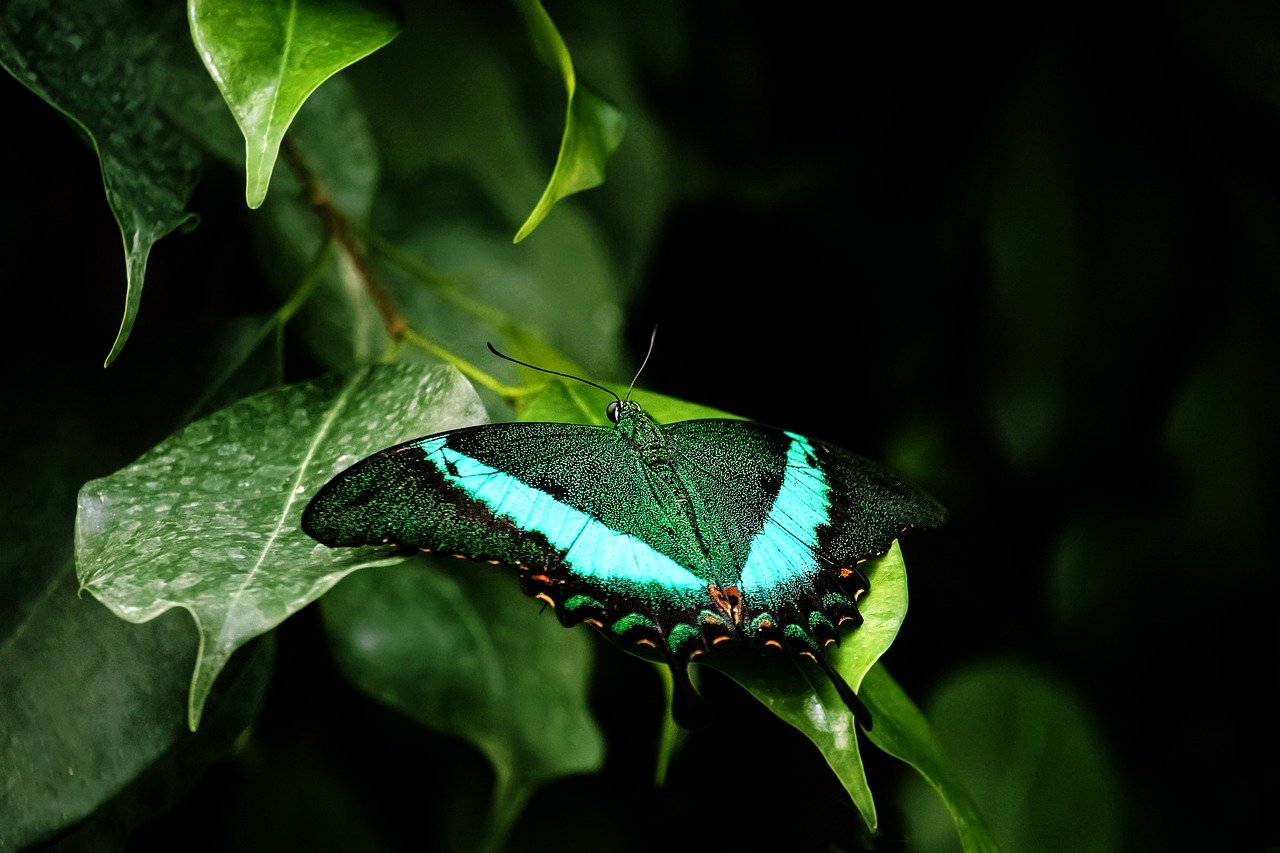
Indoor Plants
Indoor plants are a fantastic way to bring nature inside your home, creating a refreshing and vibrant atmosphere. These plants not only add beauty to your living spaces but also offer numerous health benefits by purifying the air and reducing stress levels. When choosing indoor plants, consider factors such as light conditions, humidity levels, and available space to ensure they thrive in their new environment.
One popular indoor plant option is the Spider Plant, known for its air-purifying qualities and easy maintenance. With its long, arching leaves and small white flowers, the Spider Plant is perfect for hanging baskets or as a tabletop plant. It thrives in indirect sunlight and requires occasional watering.
Another excellent choice is the Snake Plant, also called Mother-in-Law's Tongue. This plant has tall, sword-shaped leaves that can survive low light conditions and irregular watering. The Snake Plant is ideal for bedrooms and offices, as it releases oxygen at night, promoting better sleep.
If you're looking for a flowering plant, consider the Pothos, also known as Devil's Ivy. This plant features heart-shaped leaves in various shades of green and yellow, adding a pop of color to any room. Pothos is low maintenance and can thrive in low light environments, making it perfect for beginners.
For those seeking a touch of elegance, the Fiddle Leaf Fig is a popular choice. With its large, violin-shaped leaves, this plant makes a bold statement in any space. The Fiddle Leaf Fig requires bright, indirect light and regular watering to keep its leaves glossy and healthy.
When caring for indoor plants, remember to dust their leaves regularly, as dust can block sunlight absorption. Additionally, avoid overwatering, as it can lead to root rot. With proper care and attention, your indoor plants will flourish, bringing joy and tranquility to your home.
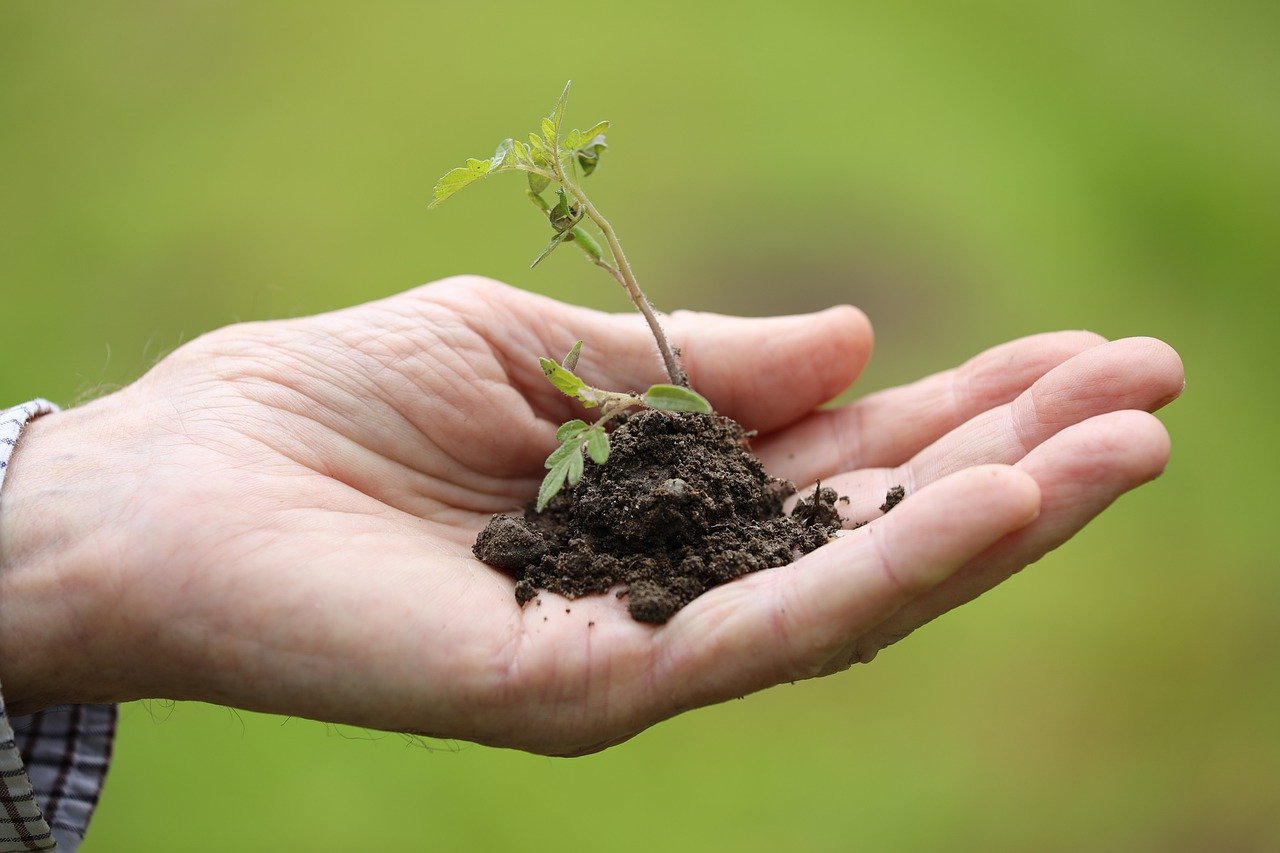
Outdoor Plants
When it comes to outdoor plants, the options are vast and varied, offering a plethora of choices to enhance your outdoor living spaces. From vibrant flowers to lush greenery, outdoor plants can transform your garden, patio, or balcony into a colorful and inviting oasis. These plants not only add aesthetic appeal but also contribute to the overall ambiance of your outdoor areas, creating a welcoming and relaxing environment for you to enjoy.
One popular choice for outdoor plants is perennials, which are plants that come back year after year, requiring minimal maintenance once established. Perennials offer a long-lasting burst of color and texture to your garden, making them a favorite among gardeners looking for reliable and beautiful plants. Additionally, shrubs are another excellent option for outdoor landscaping, providing structure and form to your outdoor spaces while requiring little upkeep.
For those looking to attract pollinators such as bees and butterflies, flowering plants like lavender and bee balm are excellent choices. These plants not only add visual interest with their colorful blooms but also support local ecosystems by providing food and habitat for beneficial insects. Furthermore, ornamental grasses can add movement and texture to your outdoor areas, creating a dynamic and visually appealing landscape.
When selecting outdoor plants, it's essential to consider the sunlight and water requirements of each plant to ensure they thrive in their designated location. Some plants prefer full sun, while others thrive in partial shade, so understanding your outdoor environment is crucial for successful plant growth. Additionally, proper soil preparation and fertilization can significantly impact the health and vitality of your outdoor plants, providing them with the nutrients they need to flourish.
Whether you're looking to create a vibrant floral display, a serene green retreat, or a functional vegetable garden, outdoor plants offer endless possibilities for beautifying your outdoor living spaces. With the right selection of plants and proper care, you can enjoy a flourishing garden that brings joy and tranquility to your outdoor environment.
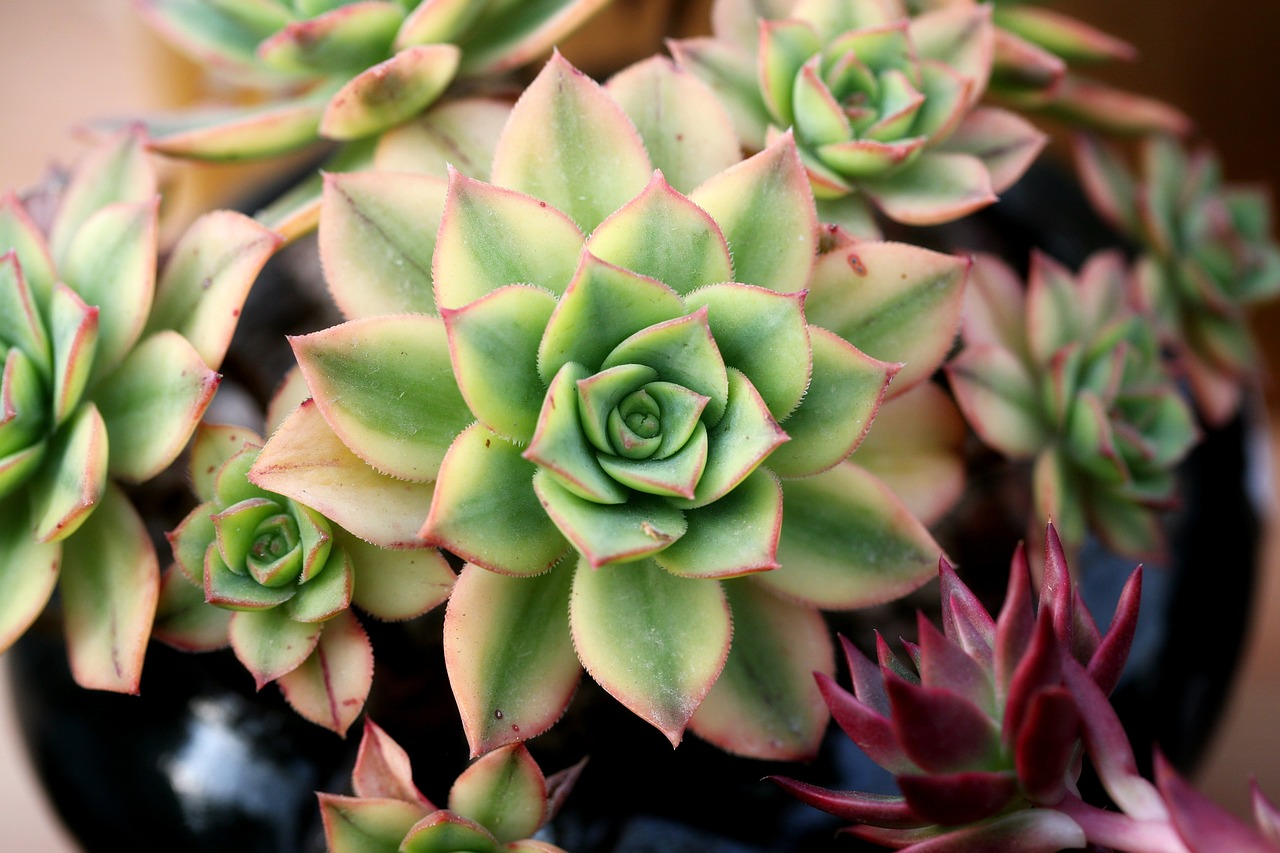
Succulents and Cacti
Succulents and cacti are fascinating plants that have gained immense popularity among gardeners and plant enthusiasts alike. These unique plants are known for their ability to store water in their fleshy leaves or stems, making them highly resilient to dry conditions. Succulents and cacti come in a wide variety of shapes, sizes, and colors, making them versatile additions to both indoor and outdoor gardens.
One of the key reasons why succulents and cacti are beloved by many is their low maintenance requirements. These plants thrive in well-draining soil and are tolerant of infrequent watering, making them ideal for busy individuals or those new to gardening. Their striking appearance, with intricate patterns and textures, adds a touch of exotic beauty to any space.
When it comes to caring for succulents and cacti, it is essential to provide them with plenty of sunlight. These plants love bright, indirect light and will flourish when placed near a sunny window or in a sunny spot outdoors. Overwatering is the most common mistake made when caring for succulents and cacti, so it's crucial to allow the soil to dry out completely between waterings.
Creating a well-draining soil mix for your succulents and cacti is paramount to their health and growth. A mixture of cactus soil or sandy soil with perlite or pumice will ensure proper drainage and prevent root rot. Repotting your succulents and cacti every couple of years will also help refresh the soil and provide them with the necessary nutrients to thrive.
For those looking to propagate their succulents and cacti, these plants offer a fun and rewarding experience. Many varieties can be easily propagated from cuttings or offsets, allowing you to expand your collection and share the beauty of these plants with others. With a bit of patience and care, you can watch your succulents and cacti grow and flourish over time.
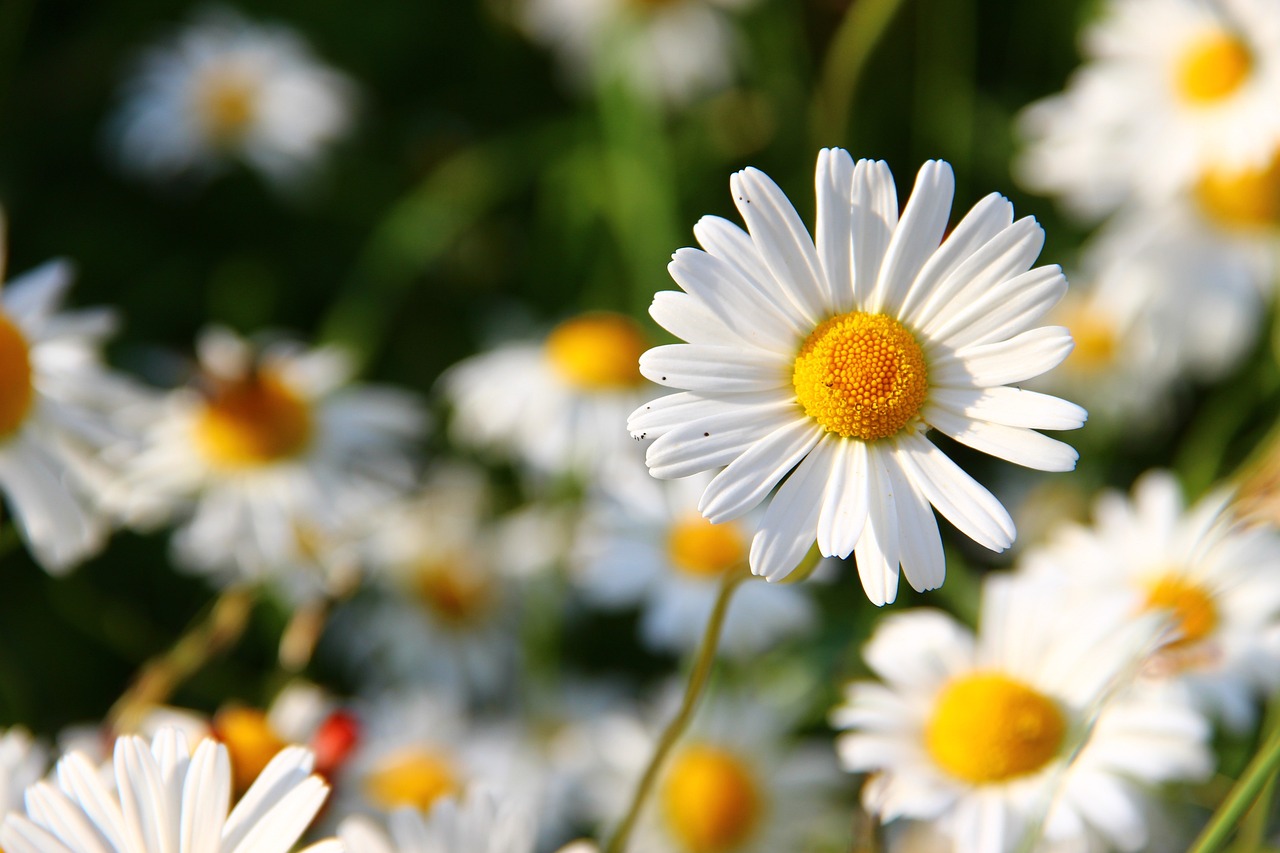
Herbs and Vegetables
When it comes to cultivating a green thumb, exploring the world of herbs and vegetables can be both rewarding and flavorful. Imagine stepping into your garden or kitchen and plucking fresh herbs like basil, mint, or cilantro to elevate your culinary creations with a burst of aroma and taste. Not only do herbs add a delightful punch to dishes, but they also offer a sense of satisfaction knowing that you grew them yourself, nurturing them from seedlings to fully mature plants.
Vegetables, on the other hand, provide a sense of fulfillment as you watch them grow from tiny seeds into robust plants bearing colorful produce. Picture harvesting ripe tomatoes, crunchy bell peppers, or vibrant carrots straight from your garden, knowing that you played a part in their journey from soil to plate. The freshness and quality of homegrown vegetables can truly transform your meals, making every bite a celebration of your gardening efforts.
When it comes to selecting the right herbs and vegetables for your garden, consider factors such as sunlight exposure, soil quality, and water requirements. Some herbs thrive in sunny spots with well-draining soil, while certain vegetables prefer partial shade and consistent moisture. By understanding the specific needs of each plant, you can create an ideal growing environment that encourages healthy growth and abundant harvests.
Experimenting with a variety of herbs and vegetables can also add visual interest to your garden, with different colors, shapes, and textures creating a vibrant tapestry of edible delights. From the delicate fronds of dill to the robust leaves of kale, each plant brings its own unique charm to the garden, turning it into a living work of art that evolves with each passing season.
Whether you have a spacious backyard or a compact balcony, herbs and vegetables can thrive in containers, raised beds, or traditional garden plots, adapting to the available space and transforming it into a productive oasis. The joy of tending to your herb garden or vegetable patch goes beyond the act of gardening itself; it encompasses a deeper connection to nature, a sense of self-sufficiency, and a healthier lifestyle centered around fresh, homegrown produce.
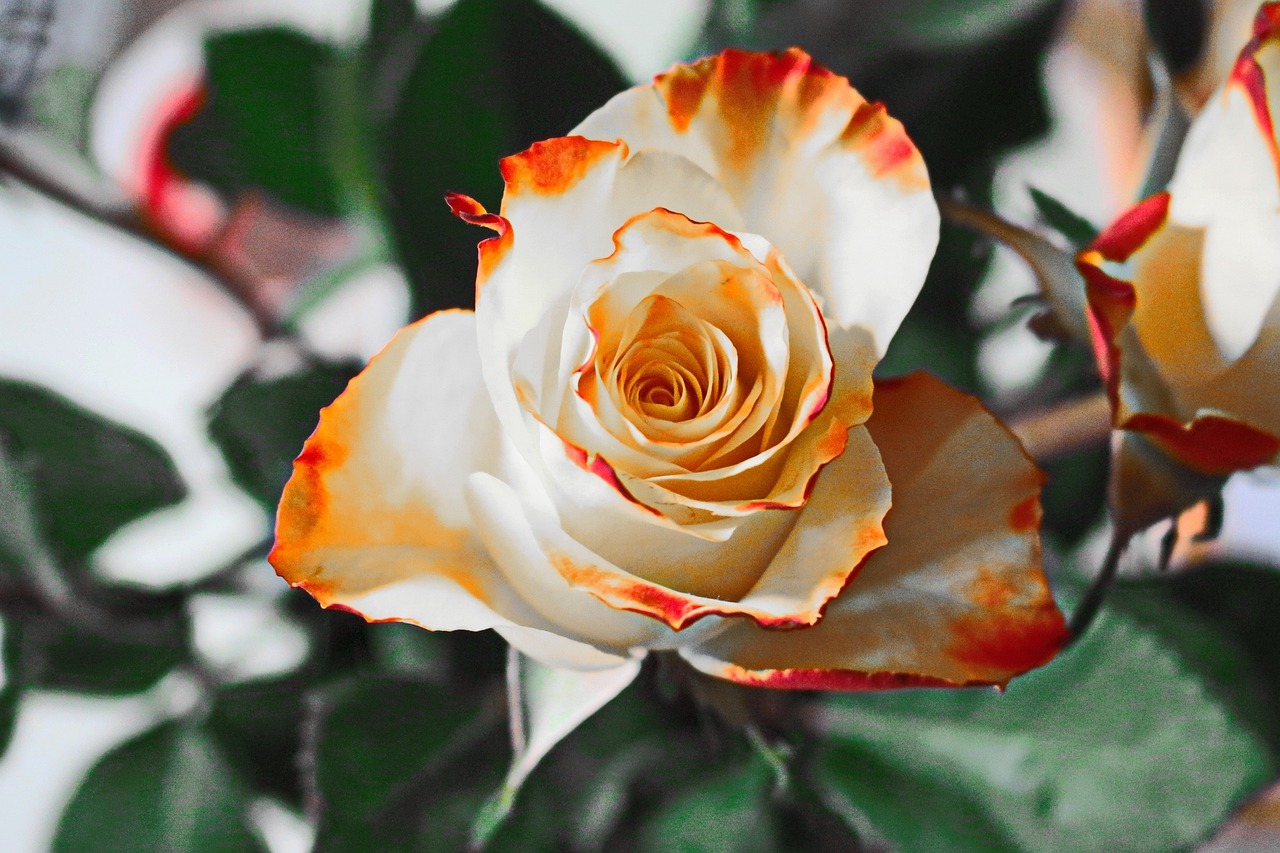
Flowering Plants
When it comes to adding a pop of color and vibrancy to your indoor and outdoor spaces, flowering plants are an excellent choice. These plants are nature's way of bringing joy and beauty into our lives, with their stunning blooms and captivating fragrances. Whether you prefer delicate petals or bold blossoms, there is a wide variety of flowering plants to choose from that can elevate the aesthetics of your surroundings.
One popular option for indoor flowering plants is the Orchid, known for its elegant and exotic appearance. Orchids come in a range of colors and patterns, making them a versatile choice for adding a touch of sophistication to any room. These plants require minimal care but reward you with long-lasting blooms that can brighten up your space.
For outdoor gardens, Roses are a classic choice that never goes out of style. With their timeless beauty and enchanting fragrance, roses can transform any garden into a romantic retreat. From climbing roses to shrub varieties, there are numerous options to suit your garden's style and color scheme.
If you're looking for a low-maintenance flowering plant, consider Marigolds. These cheerful flowers are easy to grow and come in vibrant shades of yellow and orange, adding a sunny touch to your outdoor space. Marigolds also have natural pest-repelling properties, making them a practical and beautiful addition to your garden.
Another popular choice for indoor flowering plants is the Pothos. While primarily known for their trailing foliage, Pothos plants also produce small, white blooms that add an unexpected charm to their lush green leaves. These plants are perfect for hanging baskets or as trailing accents on shelves and mantels.
When selecting flowering plants for your indoor or outdoor garden, consider factors such as sunlight requirements, watering needs, and blooming seasons to ensure they thrive in their environment. With proper care and attention, flowering plants can bring a sense of joy and tranquility to your living spaces, making them a delightful addition to any home.
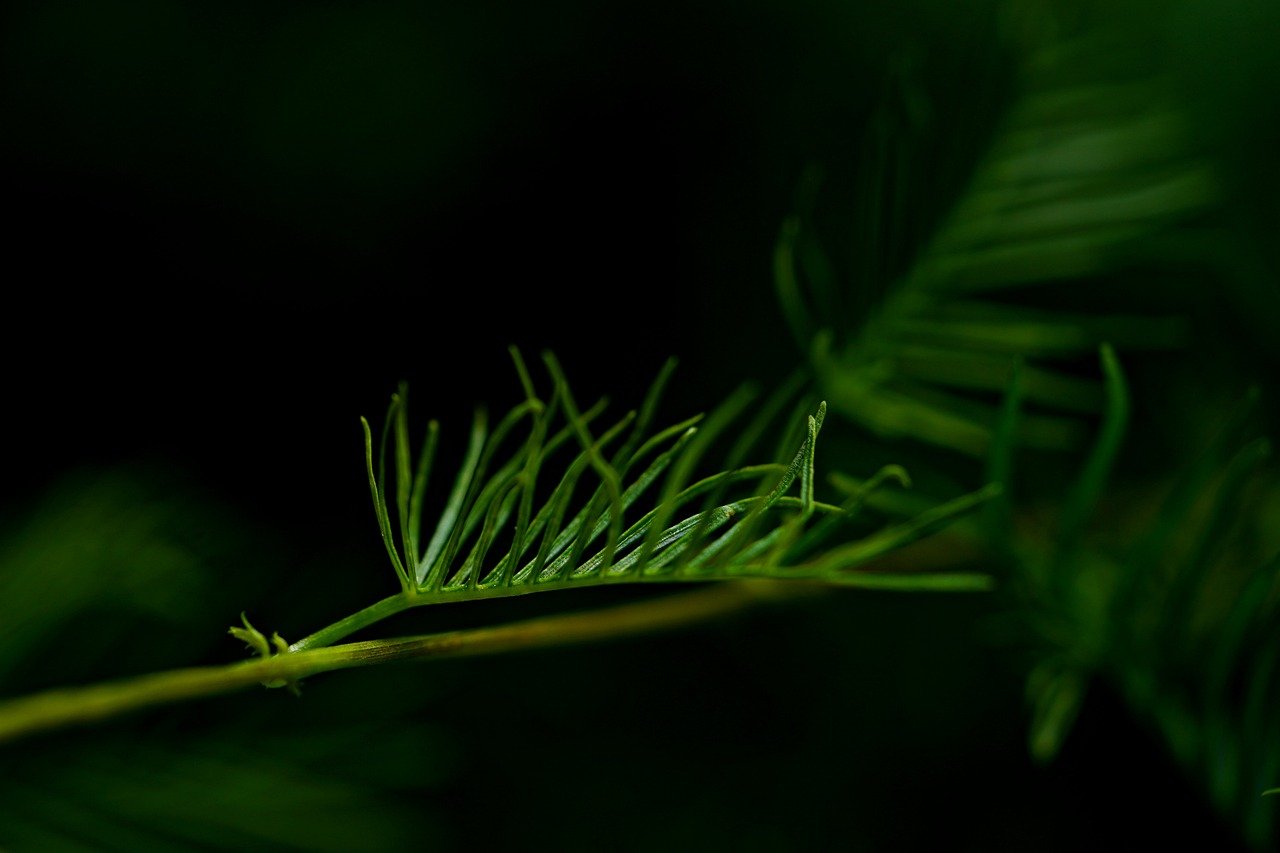
Foliage Plants
When it comes to foliage plants, you are entering a world of lush greenery and unique textures that can transform any indoor or outdoor space into a green oasis. These plants are prized for their stunning leaves, which come in various shapes, sizes, and colors, adding a touch of elegance and sophistication to your surroundings.
One of the key advantages of foliage plants is their versatility. Whether you are looking to create a statement piece in your living room or add a pop of color to your garden, there is a foliage plant to suit every style and preference. From the classic beauty of the Monstera to the intricate patterns of the Calathea, these plants are sure to captivate your attention and elevate the aesthetic appeal of your home or outdoor area.
Furthermore, foliage plants are not just visually appealing; they also offer numerous health benefits. Studies have shown that indoor plants, especially those with lush foliage, can help purify the air by removing toxins and releasing oxygen. This not only improves the air quality in your home but also creates a calming and rejuvenating atmosphere, perfect for relaxation and unwinding after a long day.
When caring for foliage plants, it is essential to consider their specific needs, such as light requirements, watering frequency, and humidity levels. Some plants may thrive in bright, indirect light, while others prefer shade or low light conditions. Additionally, maintaining a consistent watering schedule and providing adequate humidity can help prevent issues like leaf yellowing or drooping, ensuring your foliage plants remain healthy and vibrant.
To showcase the beauty of foliage plants in your indoor space, consider creating a mini indoor jungle by grouping different varieties together in decorative pots or planters. This not only adds visual interest but also allows you to experiment with different textures and colors, creating a dynamic and visually appealing display.
For outdoor landscapes, foliage plants can be used to create focal points, borders, or even living walls, adding depth and dimension to your garden design. Whether you opt for large, statement plants like the Fiddle Leaf Fig or cascading vines like the Devil's Ivy, foliage plants can be versatile additions that enhance the overall aesthetic of your outdoor space.

Climate Considerations
When selecting plants for your indoor and outdoor gardens, play a crucial role in ensuring their health and growth. Different plants have specific climate requirements that need to be met for them to thrive optimally. Factors such as temperature, humidity, sunlight exposure, and rainfall levels all contribute to creating the ideal environment for your plants.
For indoor plants, it's essential to mimic their natural habitat as closely as possible. Consider the microclimate within your home – areas with different temperature and light conditions. Some plants may prefer a sunny windowsill, while others thrive in a more shaded corner. Understanding the microclimates in your home will help you place your plants where they can flourish.
Outdoor plants, on the other hand, need to be selected based on your hardiness zone. Each region has a specific hardiness zone classification that indicates the average minimum winter temperature. Choose plants that are suitable for your zone to ensure they can withstand the local climate conditions, including frost, heat, or excessive rainfall.
Consider the seasonal changes in your area when planning your outdoor garden. Select plants that bloom or thrive during different seasons to maintain a vibrant and colorful garden throughout the year. Understanding the seasonal patterns in your region will help you choose plants that can adapt to the changing climate.
For both indoor and outdoor plants, humidity levels are crucial for their growth. Some plants, such as tropical varieties, require higher humidity levels to thrive, while others, like succulents, prefer drier conditions. You can adjust humidity levels by misting your plants, using a humidifier, or grouping plants together to create a microclimate with higher humidity.
Lastly, consider the local weather patterns when selecting plants for your garden. Be aware of any extreme weather events, such as storms, heatwaves, or prolonged periods of drought, that may affect your plants. Prepare your garden by providing adequate shelter, mulching, or using protective covers to safeguard your plants from unpredictable weather conditions.
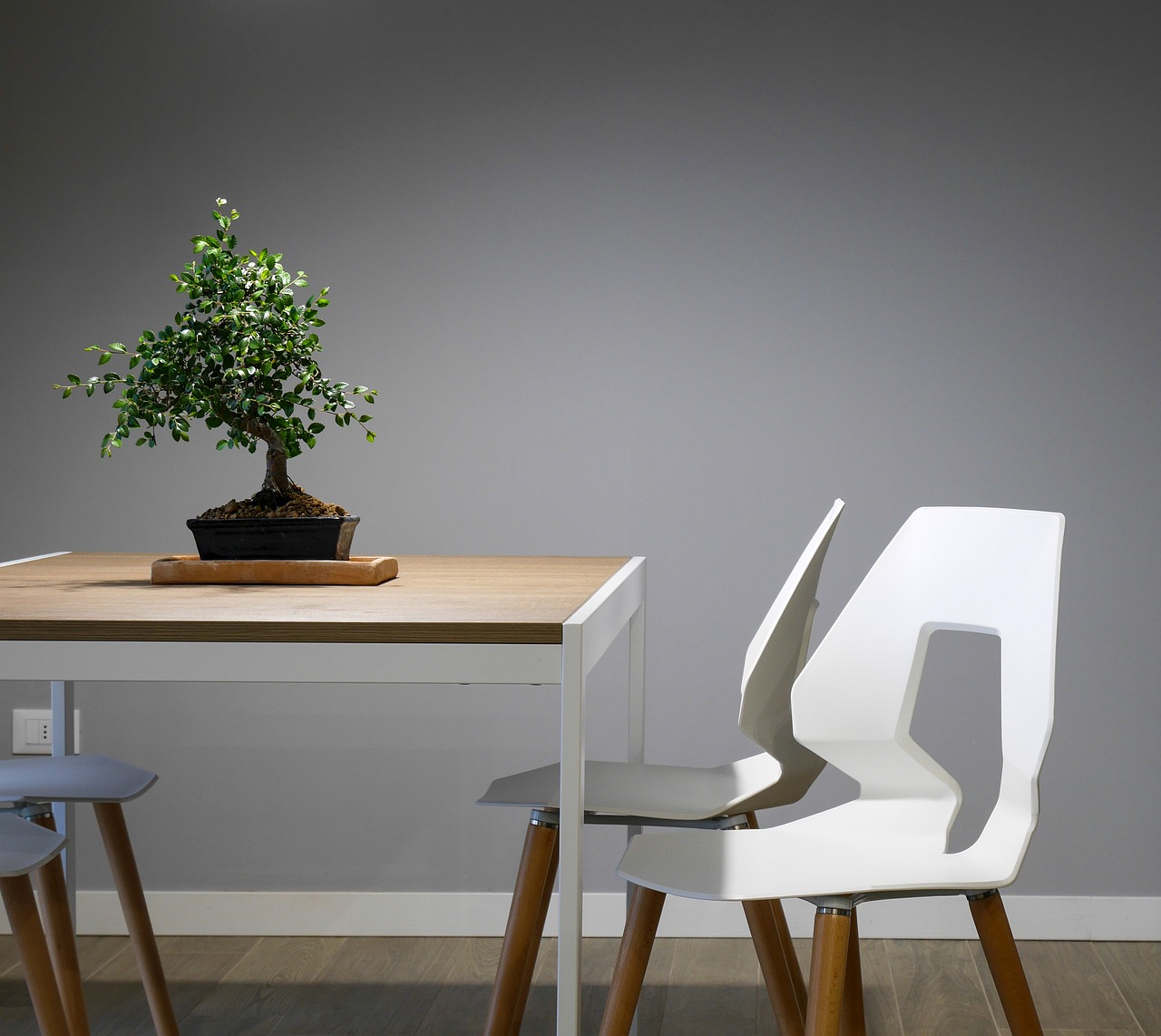
Care and Maintenance Tips
When it comes to caring for your indoor and outdoor plants, a little effort goes a long way in ensuring their health and vitality. One of the most critical factors in plant care is proper watering. Different plants have varying water needs, so it's essential to research and understand the watering requirements of each plant in your garden. Overwatering can lead to root rot, while underwatering can cause wilting and stunted growth.
Light is another crucial element for plant growth. Indoor plants may require different light conditions than outdoor plants, so it's important to place them in areas where they can receive adequate sunlight or artificial light. Understanding the light preferences of your plants can help them thrive and flourish.
Fertilization is also key to maintaining healthy plants. Providing the right nutrients at the right time can promote growth and blooming. Be sure to follow the recommended fertilization schedule for each type of plant to avoid nutrient deficiencies or excesses.
Pest control is an ongoing task for plant enthusiasts. Keep an eye out for common pests like aphids, mealybugs, and spider mites, which can damage your plants if left unchecked. Consider using natural remedies or pesticides to keep pests at bay without harming the environment.
Pruning and grooming your plants regularly can help maintain their shape and encourage new growth. Remove dead or yellowing leaves, trim overgrown branches, and pinch back leggy growth to promote bushier and healthier plants.
Lastly, don't forget to monitor the overall health of your plants regularly. Look for signs of disease, nutrient deficiencies, or stress, and take prompt action to address any issues. By staying proactive and attentive to your plants' needs, you can create a thriving garden both indoors and outdoors.
Frequently Asked Questions
- What are the best indoor plants for beginners?
For beginners, easy-to-care-for indoor plants such as pothos, snake plants, and spider plants are ideal choices. These plants require minimal maintenance and can thrive in various light conditions.
- How often should I water my indoor plants?
The watering frequency for indoor plants varies depending on the plant type, pot size, and environmental conditions. As a general rule, it's best to water when the top inch of soil feels dry to the touch.
- Can outdoor plants be grown indoors?
While some outdoor plants can adapt to indoor environments, not all outdoor plants thrive indoors due to differences in light, temperature, and humidity. It's essential to research specific plant requirements before bringing them indoors.
- How can I prevent pests from damaging my plants?
Regularly inspecting your plants for signs of pests, maintaining good air circulation, and avoiding overwatering can help prevent pest infestations. Additionally, natural remedies like neem oil or insecticidal soap can be used to control pests.
- What are the benefits of growing herbs and vegetables at home?
Growing herbs and vegetables at home allows you to have fresh, organic produce at your fingertips, enhances the flavor of your dishes, and promotes a deeper connection to nature and sustainable living.



